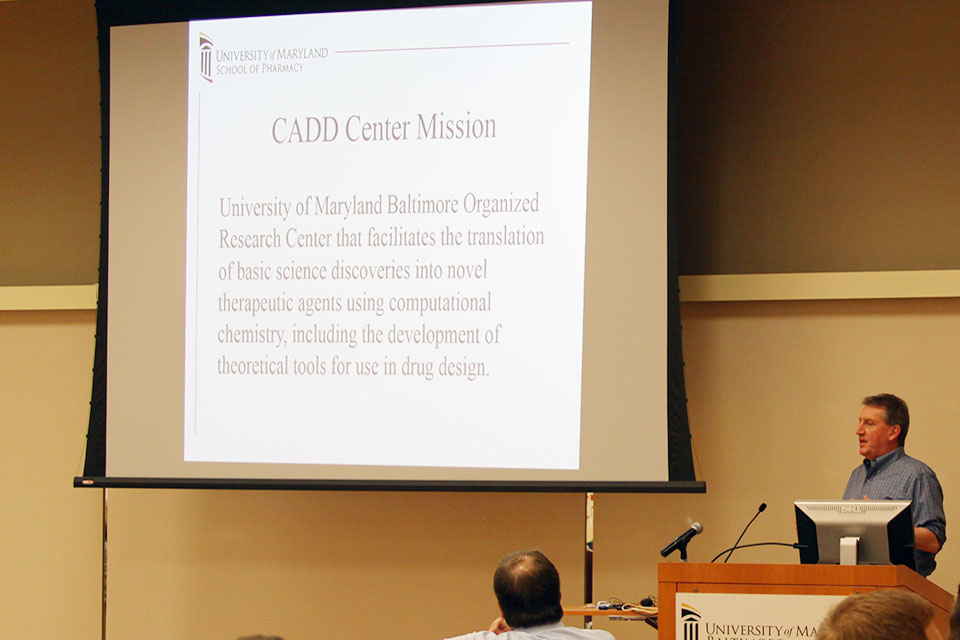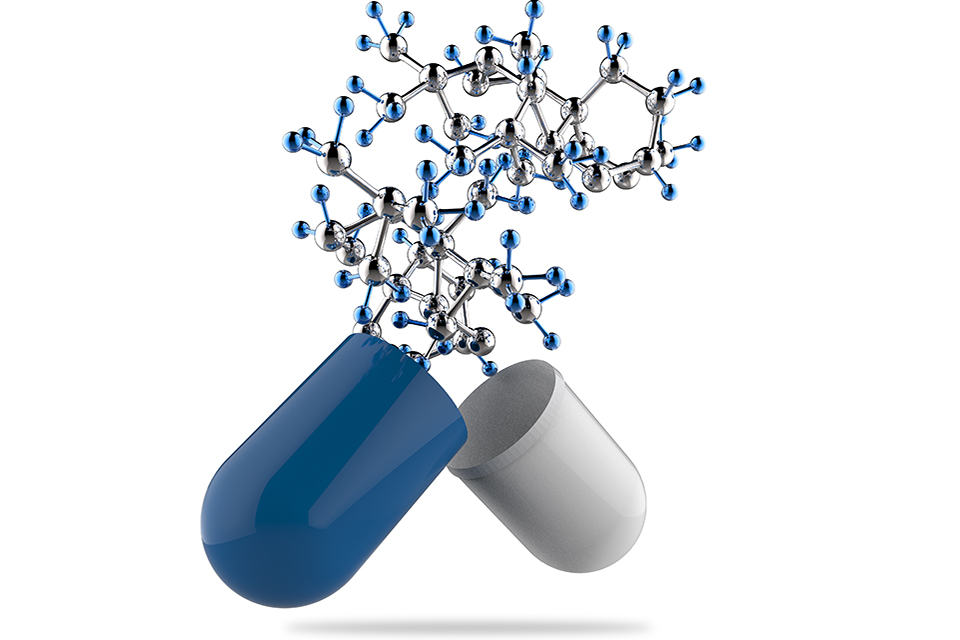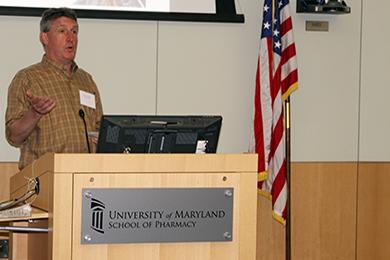Study Sheds Light on Critical Transporter Activation Mechanism
Findings published by Dr. Jana Shen and colleagues illustrate the power of molecular simulations to help researchers better understand key atomic-level changes.
By Malissa Carroll
March 6, 2017
A team of five researchers led by Jana Shen, PhD, associate professor in the Department of Pharmaceutical Sciences (PSC) at the University of Maryland School of Pharmacy, helped settle a long-standing debate surrounding the mechanism of the sodium-proton antiporter NhaA in Escherichia coli (E. coli). Published in Nature Communications, their findings demonstrate the power of molecular simulations and provide researchers with an atomic-level view of how ions are transported across the cell membrane via the transport of protons in an opposite direction – a process that was previously impossible to illustrate with other simulation techniques.
“The focus of this study was antiporters, which are the secondary active membrane transporters,” says Shen, who also serves as co-director of the School’s Computer-Aided Drug Design Center. “We wanted to determine how the transporter is activated, as well as which residues were responsible for releasing protons and capturing ions, and the accompanying conformational changes of the transporter. Proton locations are difficult to determine using current experimental techniques. However, our lab has developed specialized computational tools to tackle problems such as this, which are otherwise nearly impossible to address.”
Shen and her team focused their work on an antiporter found in E. coli known as NhaA. This antiporter facilitates the extrusion of sodium ions out of the cell and helps maintain sodium and pH homeostasis (balance). In humans, defects associated with similar sodium/proton exchangers can lead to hypertension, heart disease, and autism. There has been a long-standing debate surrounding the detailed mechanism of sodium binding and transporting in NhaA. To help provide a clearer picture, Shen and her team used a molecular simulation technique known as continuous constant pH molecular dynamics (CpHMD), which models protonation (proton binding) and deprotonation (proton release) events while recording a dynamic trajectory (molecular movie) of the protein.
Their findings reconciled two leading models that describe the antiporter activation and sodium binding events – the pH-activated allosteric model and the competitive binding model. The team was able to show which proton donors were involved in the activation and proton/ion exchange process, noting that Asp164 was the first proton donor involved, followed by Lys300, which formed a “salt bridge” with an inactivated Asp163 and released a proton following the binding of a sodium ion to Asp163. Their data further demonstrated that the activation of NhaA involves a net charge switch of the entrance to the antiporter’s cytoplasmic funnel and opening of a hydrophobic (water-repelling) gate at the end of this funnel.
Though these findings may affect the way in which drugs for hypertension and other cardiovascular diseases are developed in the future, Shen notes that one of the most important takeaways from this research is the ability of computational scientists – who use computer simulations to tackle a wide range of biological and chemical problems – to help solve some of the most challenging problems facing other researchers in the fields of drug discovery and drug development.
“The most practical implication of this work for me is the knowledge that we, as scientists, need to work together,” says Shen. “The studies that my colleagues and I conduct using CpHMD and other computational methodologies are very complementary to the work being done by other researchers using wet-lab experimental techniques. We can use the specialized knowledge and tools from our field, coupled with what others have learned from their experiments, to help reduce the costs associated with developing new drugs and shorten the drug discovery timeline.”
Led by Alexander MacKerell, Jr., PhD, the Grollman-Glick Professor of Pharmaceutical Sciences at the School of Pharmacy, the Computer-Aided Drug Design Center facilitates collaboration between scientists in the computational, chemical, and biological sciences with the goal of transitioning discoveries in the basic sciences into novel therapeutic agents. Shen’s laboratory, which is housed within the Center, focuses on the study of proton-coupled processes. While the results of this study provided a clear picture of the initial events that trigger the activation of NhaA in the cell, Shen and her team plan to continue their work to shed light on the complete process in the near future.



